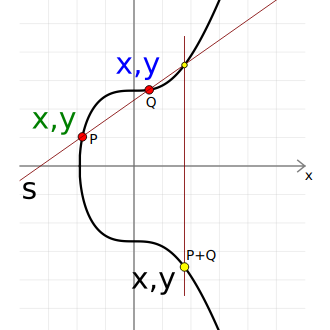The world of elliptic curves is a captivating realm—an intersection of geometry, algebra, and cryptography. At its heart lies the task of counting points on these curves, a process that can often seem perplexing, much like seeking a rare animal deep within an untrammeled forest. Understanding this counting method is essential for cryptographic applications where security measures depend on the difficulty of certain mathematical problems. So, how does one embark on this journey without losing sanity amid the algebraic underbrush?
Imagine standing at the edge of a vast, uncharted territory, armed only with a compass that refuses to point north. You are on the brink of exploring elliptic curves, defined algebraically by a simple equation: y^2 = x^3 + ax + b. This equation draws a captivating landscape on the Cartesian plane, an intricate dance of points known to embody profound mathematical properties.
To venture further, let’s first elucidate what constitutes an elliptic curve. The smoothness condition, encompassing non-singularity, stipulates that the curve must not cross itself. Furthermore, we require the coefficients a and b such that the discriminant −16(4a^3 + 27b^2) ≠ 0. This condition ensures our curve is not distorted, preserving the elegant structure we seek.
Now armed with the fundamental equation, one must ascertain the total number of rational points on this elliptic curve. This task can be likened to counting the stars—an endeavor fraught with uncertainty and unpredictability. As we delve into the nitty-gritty, we shall employ the enigmatic Hasse’s theorem, which provides an upper limit to the number of rational points based on the properties of finite fields.
Essentially, the theorem states that if p is a prime number and our elliptic curve is defined over the finite field F_p, then the number of points N_p on the curve satisfies the following: |N_p - (p + 1)| ≤ 2√p. Here, the expression aligns closely with the whims of nature, revealing that the population of points varies but remains tethered to the prime’s fundamental characteristics.
But how can one effectively enumerate these points without succumbing to chaos? Let us employ the method of counting points through simpler finite fields. This iterative approach starts by examining small prime fields, where the computational burden is manageable. Begin at F_2 and F_3, evaluating the equation iteratively. For these base cases, the results are manageable lists of points where coordinates yield legitimate solutions. Under the stars of mathematics, these first encounters establish a foundation.
As we traverse larger fields like F_5 and F_7, the method remains consistent. Each point corresponds to a unique y, calculated using the original elliptic equation tailored to the finite characteristic. With diligent marking, one observes a certain rhythm, an enchanting congruence that echoes throughout the computations. Enumerating the points serves as a form of exploration—a mathematical safari through an abstract wilderness.
Upon gathering insights from finitely small fields, employ the Weil conjectures, which act as guiding hefty compasses directing towards deeper exploration of the curves. They reveal astonishing patterns about the distribution of points. The deeper mysteries unfold around congruences and trace formulas—a poetic arithmetic that, while complex, offers an elegant lens for evaluating infinity within finite systems.
Finding points on elliptic curves might foment madness if employed haphazardly. Yet, through structured numeration and strategic use of known algebraic properties, the anxiety begins to dissipate. Indeed, the presence of a genus, defined as the number of holes in the complex structure of the curve, provides further insight. This notion inspires an understanding crucial for grasping the implications in higher-dimensional forms and their implications for contemporary cryptography.
As one continues to navigate the complexities, consider the profound implications of the point counting process for encryption algorithms. The security of elliptic curve cryptography (ECC) hinges on the counting of points. By safely entrenching a private key within the boughs of intricate curves, a cryptographic system effectively barricades the treasures of information. Thus, diligent point tallying ensures a fortress against nefarious attempts at intrusion.
Ultimately, counting points on elliptic curves serves as both an algebraic adventure and a necessity in the realm of cryptography. The balance achieved—an interplay of abstraction, rigorous methodology, and creativity—mirrors nature itself. In this intricate polyhedral world, the essence of the journey lies in the engagement with complexity, the careful parsing of numbers adorned with an enigmatic beauty akin to our universe, teeming with countless possibilities.
As one stands back, surveying the points nestled within the ellipses, it becomes clear that each computation brings newfound clarity and depth to the cryptographer’s toolkit. Thus, by embracing both the meticulous strategies requisite for counting and the philosophical undercurrents that run beneath them, one may indeed traverse this mathematical landscape and emerge unscathed, and maybe even enlightened.








Leave a Comment